Ursa Major: an enigmatic constellation that has captured the curiosity and imagination of countless observers throughout history. This celestial formation, also known as the Big Dipper or the Great Bear, holds a deep symbolism and mythology that has inspired cultures from around the world. In this article, we embark on a journey to unravel the secrets and mysteries hidden within the Ursa Major constellation. From its ancient origins and historical depictions to its significance in astrology and scientific observations, join us as we delve into the rich tapestry of stories, legends, and spiritual interpretations that surround this iconic grouping of stars. Let us explore the profound and enduring legacy of Ursa Major, and discover the timeless enchantment it continues to evoke in our collective consciousness.
Contents
- The Origins of Ursa Major
- The Symbolism of the Big Bear
- Stories and Legends
- Ursa Major in Astrology
- Scientific Facts and Observations
- Mystical Interpretations
- The Eternal Legacy
-
Frequently Asked Questions
- 1. What is the significance of Ursa Major in astrology?
- 2. How can Ursa Major be used for navigation and timekeeping?
- 3. What is the mythological story behind the constellation Ursa Major?
- 4. What are some notable celestial objects within Ursa Major?
- 5. How is Ursa Major interpreted mystically?
- 6. Is Ursa Major associated with any particular zodiac sign?
- 7. What are some other cultural depictions of Ursa Major?
- 8. Are there any known facts about Ursa Major?
- 9. Does Ursa Major have any connection to the divine?
- 10. How has Ursa Major influenced art and literature throughout history?
- References
-
Frequently Asked Questions
- 1. What is the significance of Ursa Major in ancient mythology?
- 2. How does Ursa Major feature in historical cultural depictions?
- 3. What are some popular stories and legends related to Ursa Major?
- 4. How does Ursa Major influence astrology?
- 5. What are some scientific facts about Ursa Major?
- 6. What are the notable celestial objects within the Ursa Major constellation?
- 7. What is the spiritual significance of Ursa Major?
- 8. How is Ursa Major interpreted in astrology?
- 9. What is the eternal legacy of Ursa Major?
- 10. How can one spot Ursa Major in the night sky?
- References
- Read More
The Origins of Ursa Major
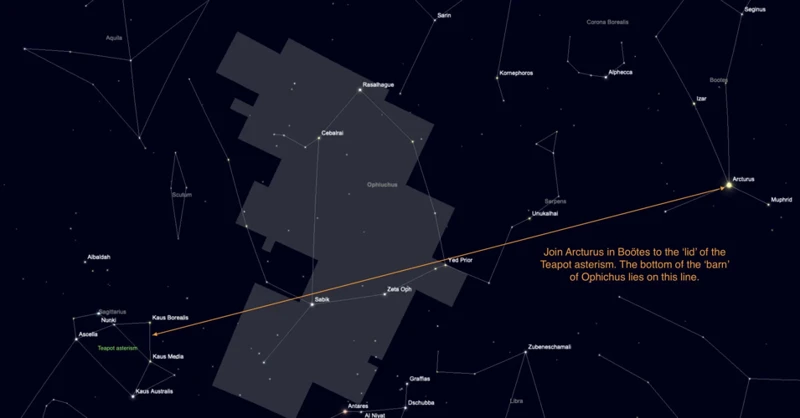
The Origins of Ursa Major can be traced back to ancient mythologies and historical cultural depictions. In various mythologies, the constellation was often associated with a bear, representing strength and power. In Greek mythology, Ursa Major is believed to depict Callisto, a beautiful nymph who was transformed into a bear by the goddess Hera out of jealousy. In Nordic cultures, Ursa Major was seen as the wagon or chariot of Thor, the god of thunder. Historical depictions of Ursa Major can be found in cave paintings and ancient artifacts, showcasing the significance placed upon this celestial formation. These depictions not only served as a navigational tool but also held spiritual and symbolic meanings. The ancient Egyptians, for example, associated Ursa Major with the soul of the pharaoh, guiding them to the afterlife. The origins of Ursa Major are deeply intertwined with humanity’s fascination with the stars and their desire to make sense of the world around them.
1.1 Ancient Mythologies
In ancient mythologies, the Ursa Major constellation holds a prominent place in stories and beliefs across different cultures. One of the most well-known mythological tales associated with Ursa Major originates from Greek mythology. According to the ancient Greeks, Ursa Major represents the nymph Callisto, who was transformed into a bear by the goddess Hera. The reason for this transformation was Hera’s jealousy towards Callisto’s beauty and her relationship with Zeus. As an immortal bear, Callisto became part of the Ursa Major constellation, forever etched in the night sky.
In Norse mythology, Ursa Major is associated with the god Thor. According to Norse beliefs, Ursa Major is seen as Thor’s wagon or chariot, pulled by two goats named Tanngnjóstr and Tanngrisnir. This mythical depiction of Ursa Major as Thor’s chariot symbolizes the god’s strength and power, connecting the constellation to the concepts of thunder and protection.
In Native American mythology, tribes such as the Lakota and Cheyenne revered Ursa Major as a sacred bear. The “Three Brothers” story tells of three hunters who pursued the bear across the sky, representing a significant hunt in their cultural narratives. Ursa Major’s position as a celestial symbol of hunting and survival in Native American folklore highlights the deep connection between the constellations and the natural world.
The ancient Egyptians also had their own interpretations of Ursa Major’s significance. They associated the constellation with the soul of the pharaoh, believing that it guided them in the afterlife. The “Imperishable Stars” or “The Mourners” represented by Ursa Major were essential in the Egyptians’ understanding of the afterlife and provided guidance to ensure a smooth transition for the pharaohs.
Throughout ancient mythologies, Ursa Major’s presence in the night sky has captivated and inspired cultures worldwide. From Greek nymphs to Norse gods and Native American hunters, the constellation’s mythological significance is a testament to humanity’s fascination with the stars and their ability to tell stories that transcend time and culture. The tales associated with Ursa Major offer a glimpse into the rich tapestry of ancient mythologies and the profound influence of the celestial realm on human imagination and belief systems.
1.2 Historical Cultural Depictions
Historical cultural depictions of Ursa Major provide fascinating insights into the significance attributed to this celestial constellation by various civilizations throughout history. In ancient China, Ursa Major was known as the “Northern Dipper” and played a fundamental role in astrology and divination. The seven stars of the Big Dipper were believed to represent the seven colors of the rainbow and were associated with specific elemental forces and directions. The Egyptians regarded Ursa Major as a manifestation of the goddess Isis, who protected and guided souls on their journey to the afterlife. The Phoenicians and Greeks saw the constellation as a representation of a bear and associated it with various deities and heroes. The Romans, on the other hand, associated Ursa Major with the goddess Diana, the protector of hunting and the wilderness. The cultural depictions of Ursa Major not only reflect the diverse beliefs and customs of different societies but also attest to its role in navigation, timekeeping, and religious symbolism. These depictions serve as a testament to the enduring fascination and reverence that humanity has held for the celestial wonders above.
For more insights into the world of astrology and its impact on our lives, you can explore the eleventh house and its connection to friendship and social networks. Alternatively, learn more about the determined and ambitious traits of a Capricorn zodiac sign. Interestingly, ancient astrological artifacts have also been discovered, shedding light on the ancient practices and belief systems surrounding astrology. Unearth some of these artifacts and dive into the historical roots of astrology by clicking this link: unearthing ancient astrological artifacts.
The Symbolism of the Big Bear
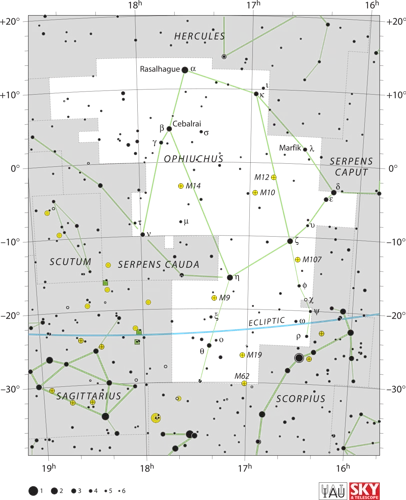
The symbolism of the Big Bear, represented by the Ursa Major constellation, holds profound significance across different cultures and belief systems. One prominent interpretation is its connection to the divine. The constellation’s visibility throughout the year and its position near the North Star has led many to view it as a celestial guide, providing a sense of direction and guidance. The Big Bear’s association with navigation and timekeeping has made it a symbol of stability and reliability. It has served as a steadfast reference point for sailors, travelers, and explorers seeking their path through the vast expanse of the night sky. Beyond its practical applications, the symbolism of Ursa Major also extends to more abstract realms. Its prominent position in the heavens has evoked notions of strength, resilience, and protection throughout history. The Big Bear has been linked to qualities such as courage, leadership, and the ability to overcome challenges. It is a reminder of our place in the universe and our connection to something greater than ourselves.
2.1 Connection to the Divine
The Ursa Major constellation has long been associated with a connection to the divine in various cultures and belief systems. Many ancient civilizations believed that the arrangement of stars in Ursa Major represented celestial gods or heavenly beings. In Greek mythology, Ursa Major was linked to the goddess Callisto, who was transformed into a bear and placed among the stars, immortalized as a celestial deity. The ancient Egyptians saw Ursa Major as a manifestation of the god Osiris, who guided the deceased pharaohs in their journey to the afterlife. In Native American folklore, the constellation represented the Great Bear, a powerful spiritual guardian and guide. This connection to the divine in Ursa Major symbolizes a bridge between the earthly and celestial realms, a pathway through which humans seek divine guidance and protection. The beauty and majesty of Ursa Major continue to inspire awe and reverence, reminding us of the timeless and transcendent nature of the universe.
Navigating the vast expanse of the night sky has been a challenge for explorers, sailors, and travelers throughout history. Ursa Major, with its prominent seven stars forming the Big Dipper, has served as a reliable celestial guide for navigation and timekeeping. Sailors would often rely on the position and movement of Ursa Major to determine their direction at sea. By observing the stars of the constellation and their relationship to the horizon, navigators could navigate with a higher degree of accuracy, even in the absence of modern technological tools. Additionally, Ursa Major played a crucial role in timekeeping. As the Earth rotates, the position of Ursa Major in relation to the observer changes throughout the night. By monitoring the movement of the constellation, timekeepers could gauge the passing hours. Notably, the North Star, Polaris, is found in close proximity to Ursa Major and has been used as a reference point for navigation and timekeeping. Its position relative to the other stars in Ursa Major has helped seafarers and astronomers alike to determine latitude and estimate the time. The significance of Ursa Major in navigation and timekeeping highlights the practical importance of understanding the stars and their movements in our quest to explore and decipher the mysteries of the universe.
Stories and Legends
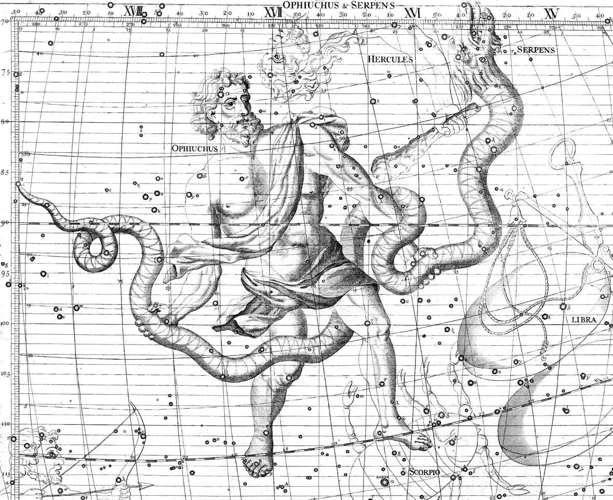
Stories and Legends have long been intertwined with the Ursa Major constellation, adding a touch of magic to its celestial presence. One prominent legend is the tale of Callisto and Arcas. Callisto, a beautiful nymph, caught the eye of Zeus and became pregnant with his child. However, when Hera, Zeus’ wife, discovered the affair, she transformed Callisto into a bear. Years later, Callisto’s son Arcas encountered the bear in the wilderness, not knowing it was his mother. Just as Arcas was about to shoot the bear, Zeus intervened and immortalized both Callisto and Arcas as stars in the sky, forever preserving their bond. Another captivating story involves the god Dionysus, who encountered a group of pirates that tried to capture him. Dionysus transformed the pirates into dolphins and cast them into the sea. In honor of their courageous act, Dionysus placed the image of a bear in the sky, forming the Ursa Major constellation. These stories and legends not only provide entertainment but also convey profound human emotions and lessons, reminding us of the enduring power of storytelling and the grandeur of the night sky.
3.1 Callisto and Arcas
Callisto and Arcas are central figures in the mythology surrounding the Ursa Major constellation. According to Greek mythology, Callisto was a nymph and a follower of the goddess Artemis. She caught the eye of Zeus, the king of the gods, who disguised himself as Artemis to get close to her. Their encounters resulted in the birth of a son named Arcas. However, Hera, Zeus’s wife, discovered Zeus’s infidelity and transformed Callisto into a bear as punishment.
Separated from her son, Callisto wandered the wilderness as a bear for many years. Eventually, one day, Arcas crossed paths with his mother, now in her bear form. Not recognizing her, he prepared to attack the bear out of fear. In that critical moment, Zeus intervened and transformed Arcas into the constellation Ursa Minor, or the Little Bear, ensuring that mother and son would remain together forever in the night sky.
This tale of transformation and eternal unity is reflected in the Ursa Major constellation, where Callisto, in her bear form, is depicted as the larger bear, while Arcas, transformed into Ursa Minor, is seen as a smaller bear. Their representation in the night sky serves as a reminder of their eternal bond and the consequences of divine love and jealousy.
This mythological story intertwines the Ursa Major constellation with themes of family, loyalty, and the enduring power of love. It has fascinated and captivated cultures throughout history, leaving an indelible mark on our collective imagination. The tale of Callisto and Arcas is just one of many stories that contribute to the rich tapestry of mythology and symbolism surrounding the Ursa Major constellation.
3.2 Dionysus and the Pirates
In the mythological tale of Dionysus and the Pirates, Ursa Major plays a significant role. According to the story, Dionysus, the Greek god of wine and revelry, was traveling with his crew of pirates when they encountered a storm at sea. To save themselves, the pirates decided to kidnap Dionysus and hold him for ransom. Unbeknownst to them, Dionysus possessed divine powers and was not so easily defeated.
As the pirates set sail, Dionysus began to unleash his true nature upon their ship. The god transformed himself into a roaring lion, causing the pirates to panic and jump overboard. But Dionysus, in all his benevolence, took pity on their fate. He transformed them into dolphins and led them to safety.
As a tribute to Dionysus’ mercy and power, Zeus immortalized the pirates as a constellation, which we now know as Ursa Major. In the night sky, you can see the transformed pirates as the stars that form the shape of the Great Bear. This myth not only explains the origin of Ursa Major but also serves as a reminder of the consequences of underestimating the gods and the interconnectedness of humanity and the celestial realm.
3.3 The Great Bear Hunt
In the vast realm of mythology and legends, one captivating tale that revolves around Ursa Major is the epic saga known as “The Great Bear Hunt.” This ancient narrative has been told in various cultures and offers an exciting twist on the traditional perception of the constellation. According to this story, a group of skilled hunters embarked on a courageous quest to track down and capture the mighty bear represented by Ursa Major. The hunters were driven by their unwavering determination to conquer the powerful beast and prove their bravery to the world. As the legend goes, the hunt lasted for days and took the hunters through treacherous terrains and perilous encounters. Their journey was fraught with challenges and obstacles, but they persisted, driven by the promise of glory and conquest. Finally, after an arduous pursuit, the hunters succeeded in capturing the great bear, bringing it back as a symbol of their triumph. This mythic tale has been interpreted in different ways across cultures, showcasing the universal themes of bravery, perseverance, and the pursuit of greatness. The Great Bear Hunt serves as a reminder that even the most daunting challenges can be overcome through determination and unity. It embodies the eternal struggle between mankind and the wild, reminding us of our primal instincts and the relentless pursuit of our aspirations.
Ursa Major in Astrology
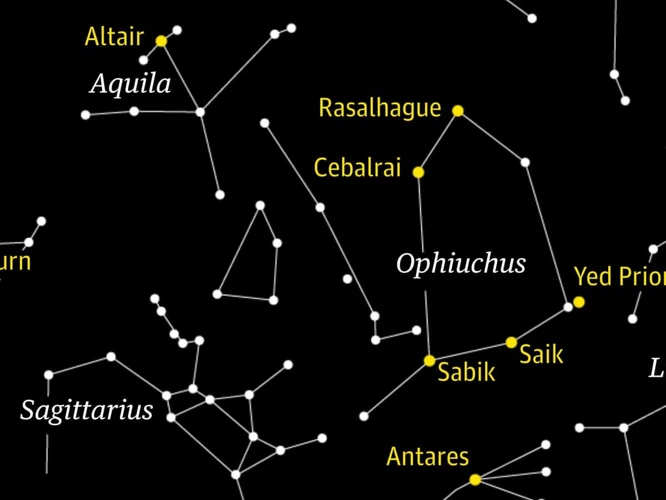
Ursa Major holds a significant place in astrology, with its influence and symbolism being explored in depth. Astrologically, Ursa Major is associated with the qualities of strength, guidance, and protection. It is believed to bestow a sense of stability, determination, and resilience upon individuals born under its influence. In astrology, Ursa Major is often associated with the eleventh house, which represents friendship, social networks, and humanitarian ideals. Those who have Ursa Major as a prominent feature in their birth chart are believed to possess a strong sense of loyalty, a natural inclination towards leadership, and a deep connection to their community. Additionally, the constellation has connections with the zodiac sign Capricorn, known for their grounded nature and go-getter attitude. The presence of Ursa Major in an individual’s astrological chart is believed to enhance their ambition and drive to achieve their goals. Whether seen as a guiding force or a source of strength and ambition, Ursa Major continues to play a profound role in astrological interpretations and in guiding individuals on their life path.
4.1 The Influence of Ursa Major
The Ursa Major constellation exerts a significant influence in various aspects of human life. One of its primary influences lies in navigation. Throughout history, travelers and explorers have used the stars of Ursa Major, particularly the two pointer stars, Merak and Dubhe, to find their way and determine their direction. These stars, also known as the “Guardians of the North,” have guided sailors and adventurers across vast oceans and uncharted territories. Even today, Ursa Major plays a crucial role in modern navigation systems, with the North Star, Polaris, located within its vicinity.
Beyond navigation, Ursa Major’s influence extends to the realm of timekeeping. The rotation of the Earth causes the stars of Ursa Major to appear to move in a circular pattern around the North Star. This cycle, known as a circumpolar motion, has been utilized for centuries as a method to measure time. The position of Ursa Major in the night sky has served as a celestial clock, aiding in the determination of seasons, months, and even hours during the night.
Ursa Major holds a special place in mythology and symbolism across cultures. Its prominence in the celestial sphere has led to numerous legends and stories associated with this constellation. From tales of celestial bears to gods and goddesses, Ursa Major’s influence transcends mere physical navigation and extends into the realms of spirituality and folklore.
In astrology, Ursa Major’s influence is also recognized. The constellation is associated with strength, power, and protection. Individuals born under the sign of Ursa Major are believed to possess qualities such as resilience, leadership, and a strong connection with nature. They are seen as natural protectors and leaders, inspiring others with their presence. Ursa Major’s influence in astrology highlights the enduring impact this constellation has had on our interpretation of the cosmos.
The influence of Ursa Major is multi-faceted and far-reaching. Its significance in navigation, timekeeping, mythology, symbolism, and astrology showcases the profound impact this constellation has had on human civilization throughout the ages. Whether as a guide in the physical world or as a source of inspiration and spiritual connection, Ursa Major continues to captivate and influence us, reminding us of the enduring mystery and wonder of the universe.
4.2 Zodiac Sign: Ursa Major
Within the realm of astrology, Ursa Major holds a unique position as a zodiac sign. Ursa Major, also known as the Great Bear, symbolizes qualities such as strength, wisdom, and protection. Those born under the zodiac sign of Ursa Major are believed to possess exceptional leadership skills and a natural ability to guide others. They are often seen as protectors and guardians, offering support and stability to those around them. Ursa Major individuals are known for their strong sense of justice and fairness, and they are deeply connected to the earth and nature. As steadfast and reliable individuals, they are often sought after for their practicality and stability. Ursa Major individuals have a strong sense of purpose and are driven to achieve their goals, often charting their own path in life. They possess a natural gravitas and are able to inspire and influence others with their captivating presence. In relationships, Ursa Major individuals are known to be fiercely loyal and dependable, making them sought-after partners. While Ursa Major individuals possess many positive traits, they can also be prone to stubbornness and possessiveness. Nevertheless, their strong moral compass and unwavering dedication make them valuable assets in any endeavor they undertake.
Scientific Facts and Observations
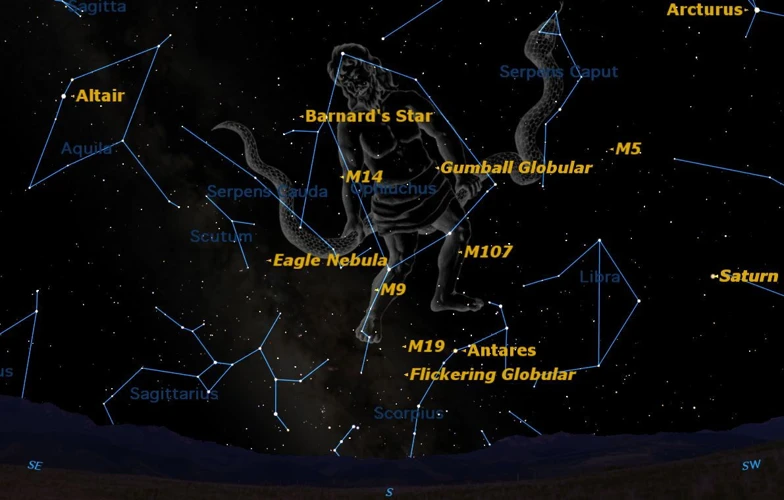
Scientific Facts and Observations about Ursa Major provide us with fascinating insights into this constellation. Ursa Major is one of the largest and most recognizable constellations in the northern hemisphere, comprising of seven bright stars that form the shape of a bear. The primary star in Ursa Major, known as Dubhe, is an orange giant located approximately 123 light-years away from Earth. Ursa Major is also home to various notable celestial objects, such as the Pinwheel Galaxy (M101), a spiral galaxy located about 21 million light-years away. Another remarkable feature is the Ursa Major Moving Group, a group of young stars that share a common origin and trajectory through space. Scientists have also discovered exoplanets within the Ursa Major constellation, adding to its scientific significance. These scientific facts and observations shed light on the vastness and complexity of the universe, allowing us to appreciate the wonders that Ursa Major holds.
5.1 Facts About Ursa Major
Let’s explore some intriguing facts about the Ursa Major constellation:
1. Size and Location: Ursa Major is one of the largest constellations in the night sky, spanning over 1,280 square degrees. It is visible in the northern hemisphere throughout the year and is easily identifiable due to its prominent seven-star pattern, known as the Big Dipper or the Plough.
2. Stars of Ursa Major: The seven stars that form the Big Dipper are named after bears in different cultures. The names of these stars are Alkaid, Mizar, Alioth, Megrez, Phad, Merak, and Dubhe. Mizar, the second star from the end of the handle, is actually a double star system, consisting of two stars that can be seen through a telescope.
3. Celestial Navigation: Ursa Major has served as a navigational tool for centuries. By locating the two stars at the edge of the Big Dipper’s bowl and extending a line through them, one can find the North Star, Polaris. This makes Ursa Major an essential guide for travelers and explorers.
4. Circumpolar Constellation: Due to its position in the northern hemisphere, Ursa Major never sets below the horizon. It is known as a circumpolar constellation, and its stars are visible throughout the night, rotating around the North Star. This makes Ursa Major a constant companion in the night sky for observers in the northern regions.
5. Galaxies and Deep-Sky Objects: Ursa Major is home to numerous galaxies and deep-sky objects. The most famous among them is the Whirlpool Galaxy (M51), a stunning spiral galaxy located near the “handle” of the Big Dipper. Other notable objects include the Owl Nebula (M97) and the Pinwheel Galaxy (M101), offering captivating sights for astronomers and stargazers.
6. Cultural Significance: Ursa Major holds cultural significance across different societies. From Native American folklore to Chinese and Hindu mythologies, this constellation has been revered and associated with various legends, stories, and celestial beings. Its prominent presence in the night sky has sparked awe and inspiration in countless cultures throughout history.
As we uncover these interesting facts about Ursa Major, we deepen our understanding of its celestial features and the impact it has had on human imagination and exploration.
5.2 Notable Celestial Objects
When exploring the Ursa Major constellation, one cannot help but be captivated by the remarkable celestial objects it contains. Let us delve into some of the most notable stars and galaxies within this stellar cluster:
- The Big Dipper: A prominent asterism within Ursa Major, the Big Dipper is composed of seven bright stars that form a distinct ladle-shaped pattern. This recognizable formation has been used by many cultures as a guide for navigation and timekeeping.
- Mizar and Alcor: Two stars that can be found within the handle of the Big Dipper. These stars have been observed since ancient times and were often used as an eyesight test. Mizar is actually a double star system, comprising Mizar A and Mizar B, which can be observed with the naked eye under ideal conditions. Alcor, on the other hand, is a fainter star located close to Mizar.
- M101 – The Pinwheel Galaxy: Situated in the constellation’s northeastern region, the Pinwheel Galaxy is a magnificent spiral galaxy that boasts beautiful arms adorned with countless stars and cosmic dust. It is one of the largest and brightest galaxies visible from Earth.
- M81 and M82: Also known as Bode’s Galaxy and the Cigar Galaxy, respectively, these two galaxies lie close to each other in Ursa Major. M81 is a grand design spiral galaxy, while M82 is an irregular galaxy with an intense rate of star formation, resulting in its distinctive shape.
These notable celestial objects within Ursa Major offer astronomers and stargazers alike a fascinating glimpse into the vastness and diversity of our universe. Whether observing the familiar shape of the Big Dipper or exploring the mesmerizing beauty of distant galaxies, these celestial wonders continue to inspire awe and wonderment in those who dare to look up at the night sky.
Mystical Interpretations
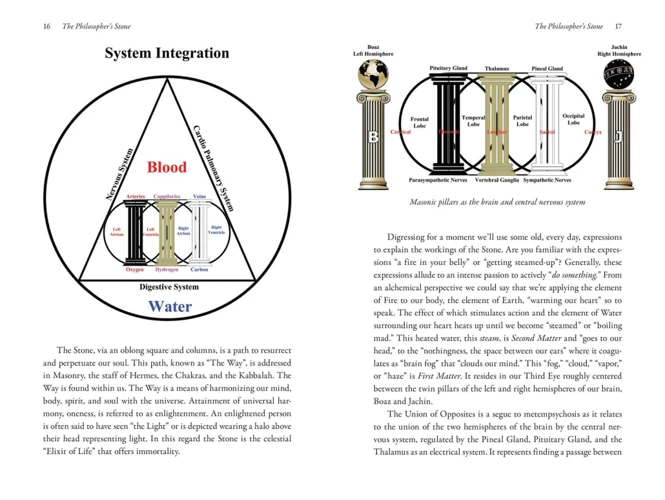
Mystical interpretations of Ursa Major delve into the profound spiritual significance and astrological symbolism associated with this celestial constellation. In spiritual teachings and esoteric beliefs, Ursa Major is often seen as a symbol of divine protection, strength, and guidance. Its prominent position in the night sky has led to the belief that Ursa Major serves as a cosmic compass, guiding seekers on their journey of self-discovery and enlightenment. Astrologically, Ursa Major is associated with qualities such as determination, resilience, and steadfastness. It is believed to bestow its influence upon individuals who align with its energy, encouraging them to embrace their inner strength and pursue their goals with unwavering determination. These mystical interpretations of Ursa Major offer a glimpse into the profound and transformative power that the cosmos holds, inviting us to explore and harness the celestial energies that surround us.
6.1 Spiritual Significance
The spiritual significance of Ursa Major is a fascinating aspect to explore. Across different cultures and belief systems, this celestial constellation holds profound symbolism and spiritual meaning. In many ancient cultures, Ursa Major was seen as a spiritual guide, guiding souls on their journey through life and into the afterlife. It was often associated with wisdom, intuition, and divine protection. The seven stars of the Big Dipper were believed to represent the Seven Sisters, who were revered as powerful goddesses or divine beings in various mythologies. In Native American folklore, Ursa Major was seen as the Great Bear, a celestial guardian and a symbol of strength, courage, and protection. The stars of Ursa Major were thought to be the campfires of the celestial hunters, watching over the Earth and its inhabitants. The spiritual significance of Ursa Major invites contemplation and reflection, reminding us of the interconnectedness between the celestial and the spiritual realms. It serves as a reminder to seek guidance and inspiration from forces beyond the mundane, allowing us to tap into our own spiritual depths and embrace the mysteries of the cosmos.
6.2 Astrological Interpretations
Astrological Interpretations offer a unique perspective on the symbolism and significance of Ursa Major. In astrology, Ursa Major is associated with the zodiac sign of Capricorn, an earth sign known for its ambition, discipline, and determination. The presence of Ursa Major in a birth chart is believed to enhance these qualities, indicating a strong drive for success and a practical, grounded approach to life. Capricorn individuals with Ursa Major in their chart are often seen as natural leaders, capable of long-term planning and strategic thinking. They possess a keen sense of responsibility and are driven to achieve their goals. Ursa Major’s influence on Capricorn can also manifest as a deep connection with nature, as well as a strong desire to bring order and structure to their surroundings. These individuals are often seen as reliable and dependable, earning the respect and admiration of those around them. The astrological interpretation of Ursa Major adds another layer of depth and meaning to this constellation’s symbolic significance, highlighting its role in shaping individual personalities and influencing the course of one’s life.
The Eternal Legacy
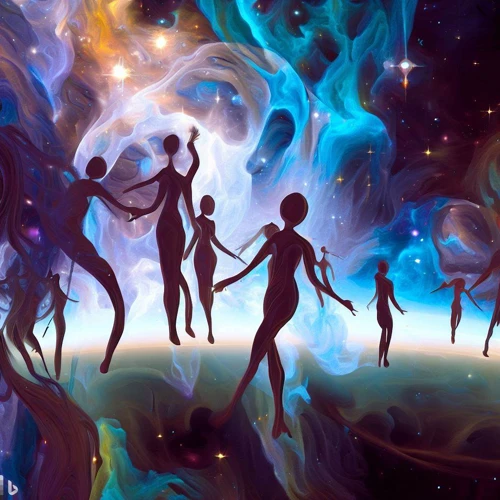
The Eternal Legacy of Ursa Major is a testament to the enduring fascination and significance this constellation holds for humanity. Throughout history, cultures around the world have bestowed profound meaning upon these celestial stars. The prominence of Ursa Major in mythology, navigation, and astrology has solidified its place in our collective consciousness. In mythology, Ursa Major is often associated with stories of great courage, transformation, and divine intervention. One such story is that of Callisto and Arcas, where Callisto, a beautiful nymph, is transformed into a bear and ultimately immortalized in the stars as Ursa Major. This tale speaks to the transformative power of the constellation and its timeless relevance in the human narrative. Ursa Major’s significance as a navigational tool cannot be understated. The constellation’s position and movement have been used by sailors and explorers for millennia to find their way. Its recognizable shape and consistent placement during the night sky have offered solace and guidance to those traversing the unknown. In astrology, Ursa Major has been associated with strength, resilience, and leadership. Its influence is believed to bring forth qualities of determination and ambition, making it an essential symbol in the zodiac. The eternal legacy of Ursa Major is also evident in the scientific observations and discoveries made regarding the constellation. Astronomers have studied the stars within Ursa Major and identified numerous notable celestial objects, including galaxies, nebulae, and star clusters. These discoveries contribute to our understanding of the vastness and beauty of the universe. Beyond the realms of mythology, navigation, astrology, and science, Ursa Major’s enduring legacy extends into the spiritual and metaphysical realms. It is seen as a symbol of connection with the divine, a guide through life’s journey, and a source of inspiration for introspection and personal growth. The constellation’s influence on our consciousness and its ability to captivate us with its beauty and symbolism make it an everlasting presence in our lives. The eternal legacy of Ursa Major continues to inspire wonder, curiosity, and a profound appreciation for the mysteries of the cosmos.
Frequently Asked Questions

1. What is the significance of Ursa Major in astrology?
Ursa Major holds great significance in astrology as it represents strength, power, and leadership. Individuals born under the influence of Ursa Major are believed to possess strong and assertive qualities.
Ancient civilizations used Ursa Major as a navigational tool. By locating the Big Dipper within the constellation, sailors and travelers could determine their direction based on its position. Additionally, the movement of Ursa Major served as a clock, helping to track the passage of time during the night.
3. What is the mythological story behind the constellation Ursa Major?
According to Greek mythology, Ursa Major represents the nymph Callisto who was transformed into a bear by the goddess Hera. It is said that Zeus, the king of gods, placed Callisto in the sky as a constellation to protect her from Hera’s wrath.
4. What are some notable celestial objects within Ursa Major?
Within Ursa Major, there are several notable celestial objects. One of the most well-known is the Pinwheel Galaxy (M101), a spiral galaxy located approximately 21 million light-years away from Earth. Other notable objects include the Whirlpool Galaxy (M51) and several globular clusters.
5. How is Ursa Major interpreted mystically?
Mystically, Ursa Major is often seen as a symbol of personal strength, endurance, and protection. It is believed to bring forth courage, stability, and transformation, making it a source of inspiration and guidance for those seeking to overcome challenges.
6. Is Ursa Major associated with any particular zodiac sign?
No, Ursa Major is not aligned with any specific zodiac sign. It is a distinct constellation that holds its own symbolism and mythology, separate from the zodiac system.
7. What are some other cultural depictions of Ursa Major?
Aside from Greek and Nordic mythologies, Ursa Major holds significance in various other cultures. Native American tribes often referred to the constellation as the “Great Bear” and incorporated it into their folklore and ceremonies. In Chinese culture, Ursa Major is associated with the mythological figure of Doumu, the goddess of the Big Dipper.
8. Are there any known facts about Ursa Major?
Yes, Ursa Major is one of the most well-known and easily recognizable constellations in the night sky. It is visible from both hemispheres and is circumpolar, meaning it never sets below the horizon.
9. Does Ursa Major have any connection to the divine?
In various mythologies, Ursa Major is often seen as a connection to the divine. It is associated with gods and goddesses, representing their power and influence over the world.
10. How has Ursa Major influenced art and literature throughout history?
Ursa Major has had a significant influence on art and literature. Throughout history, it has been depicted in paintings, sculptures, and written works, symbolizing various themes such as strength, nature, and the harmony of the cosmos.
References
- Stellar Stories: Unraveling Star Patterns and Their Meanings
- Ursa Minor Mythology – Astrophotography Lens
- Ursa Major
Frequently Asked Questions

1. What is the significance of Ursa Major in ancient mythology?
The Ursa Major constellation holds great significance in ancient mythology, symbolizing various deities, heroes, and celestial events across different cultures. It has been associated with divine beings, navigation, and timekeeping.
2. How does Ursa Major feature in historical cultural depictions?
Throughout history, Ursa Major has been depicted in various cultural traditions, from cave paintings to ancient artifacts. It has played a role in folklore, religious rituals, and astronomical observations, reflecting the cultural beliefs and practices of different societies.
The constellation of Ursa Major has inspired captivating stories and legends. These include the tales of Callisto and Arcas, Dionysus and the Pirates, and the Great Bear Hunt, each reflecting different aspects of honor, transformation, and survival.
4. How does Ursa Major influence astrology?
In astrology, Ursa Major is believed to hold influence over various aspects of human life. Its presence in a birth chart may indicate qualities such as wisdom, strength, and protection. Some astrologers associate Ursa Major with the zodiac sign of Ursa Major itself.
5. What are some scientific facts about Ursa Major?
The Ursa Major constellation is comprised of several notable stars, including the well-known Big Dipper or Plough. It is one of the most recognizable constellations in the Northern Hemisphere. Additionally, Ursa Major contains galaxies, such as the Pinwheel Galaxy (M101), which are observable with telescopes.
6. What are the notable celestial objects within the Ursa Major constellation?
Within Ursa Major, there are numerous celestial objects worth exploring. These include double stars like Alcor and Mizar, globular clusters like M13, and binary star systems like 47 Ursae Majoris. These objects provide astronomers with valuable insights into the nature of the universe.
7. What is the spiritual significance of Ursa Major?
From a mystical perspective, Ursa Major holds spiritual significance, representing the connection between earthly and celestial realms. It is seen as a guide for those seeking wisdom and illumination on their spiritual journey, reminding individuals of their place in the vast cosmic order.
8. How is Ursa Major interpreted in astrology?
Astrologically, Ursa Major is associated with qualities such as stability, protection, and intuition. It is believed to bring forth energies related to nurturing, leadership, and grounding, making it a powerful presence in astrological interpretations and chart readings.
9. What is the eternal legacy of Ursa Major?
The enduring legacy of Ursa Major lies in its ability to inspire curiosity, awe, and a sense of wonder. Its mythology, symbolism, and scientific exploration continue to captivate individuals across cultures and generations, reminding us of the vastness and beauty of the universe.
10. How can one spot Ursa Major in the night sky?
Ursa Major is easily recognizable in the night sky, particularly in the Northern Hemisphere. By locating the Big Dipper or Plough, which forms part of Ursa Major, one can trace the outline of the constellation. Its distinctive shape serves as a guide for stargazers and amateur astronomers.







